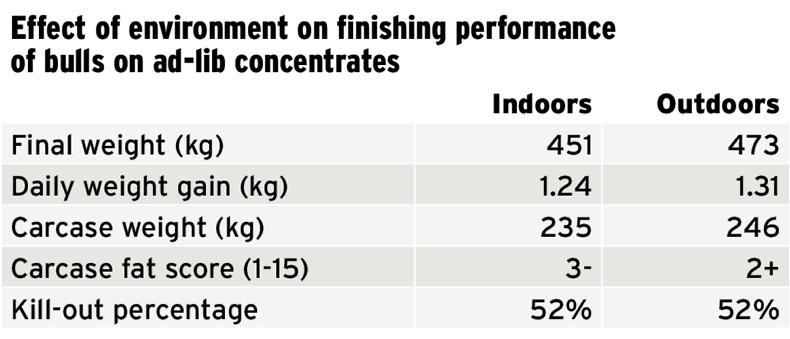Meat colour has a significant influence on a consumer’s purchasing decisions.
For example, consumers in Mediterranean Europe tend towards light, pink-coloured meat while here in Ireland and the UK we prefer a darker, more red steak.
There is research to show that grazing cattle produce darker beef than those fed on high-concentrate diets.
However, it was unclear whether or not the darkening effect was due to the grass diet itself or the increased amount of exercise with grazing animals.
As an exporting nation, it is important that we can produce a product that satisfies all of our customers.
To address this, a study was carried out at Teagasc Grange in the early 2000s, the results of which proved interesting.
Twenty-four Holstein Friesian bulls (initial weight 233kg) were adapted to ad-lib concentrates either indoors (at a stocking rate of 2.5m2 per animal) or at pasture and fed for a period of 180 days up to slaughter.

The results
There was no effect of treatment on meat colour whatsoever, but bulls at grass grew slightly faster and had heavier, leaner carcasses at slaughter.
Estimated energy intake was largely similar for both housed and outdoor bulls.
The authors attributed the differences to an exercise effect.
The bulls outdoors would have had a higher rate of exercise, which appeared to cause an increased partitioning of nutrients toward muscle building and less towards fat deposition – not unlike when a human exercises.
The fact that it takes much more energy to deposit a kg of fat compared with a kg of muscle allowed for the increased rate of daily weight gain in the outdoor animals, despite similar energy intakes.
Source: The quality of meat and fatness of bulls offered ad libitum concentrates, indoors or at pasture. Livestock Production Science. 2004. A.P. Moloney, R.J. Fallon, MT Mooney and DJ Troy
Feeders ramp up buying of short keep and forward cattle
Harnessing the power of AI to build a formidable suckler herd






 This is a subscriber-only article
This is a subscriber-only article






SHARING OPTIONS: